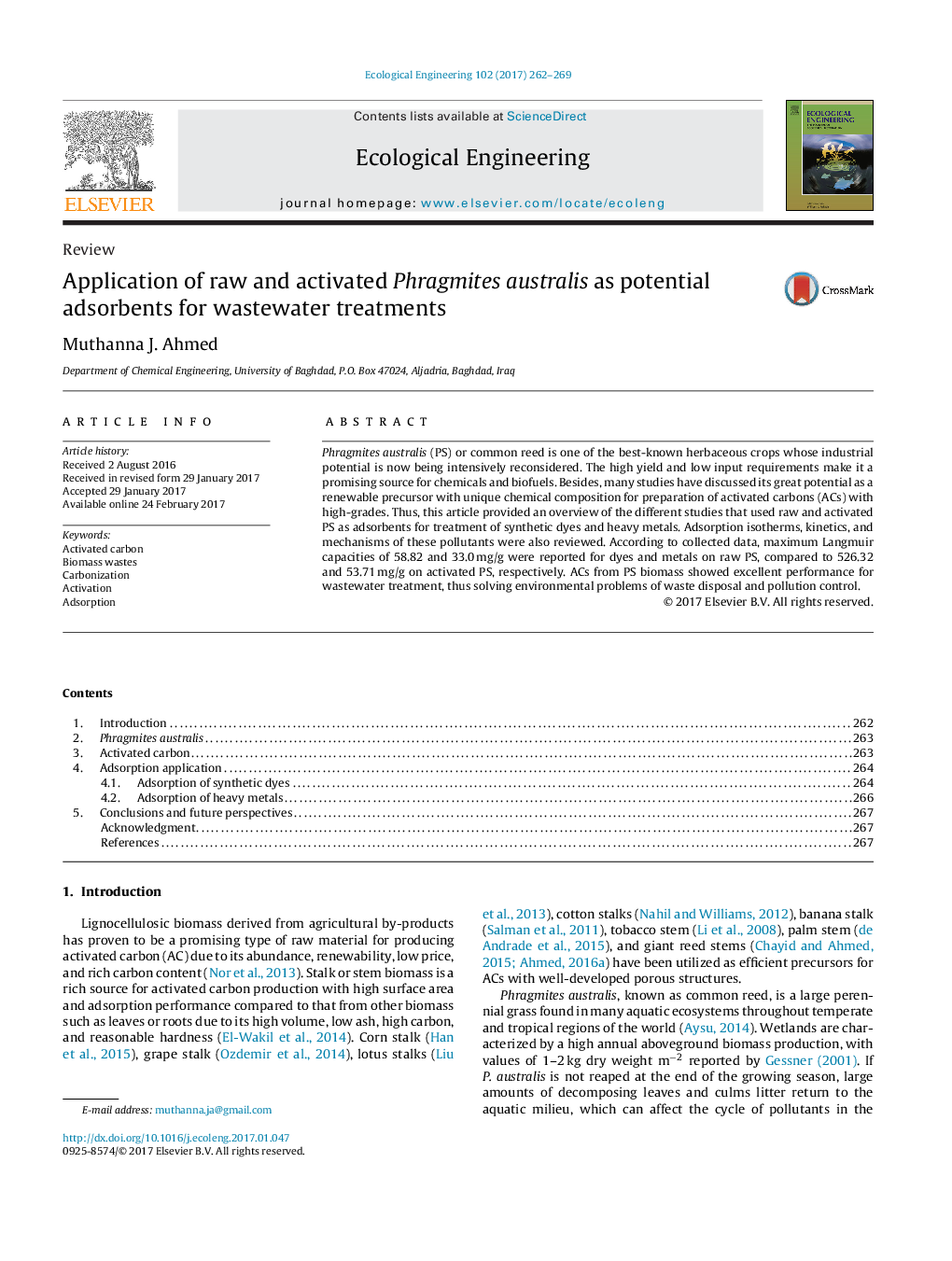| Article ID | Journal | Published Year | Pages | File Type |
|---|---|---|---|---|
| 5743770 | Ecological Engineering | 2017 | 8 Pages |
â¢Adsorption on raw and activated Phragmites australis has been reviewed.â¢Treatment of synthetic dye and heavy metal pollutants was addressed.â¢High capacities for dyes were reported compared to metals.â¢Effects of adsorption variables on performance were discussed.â¢Adsorption isotherms, kinetics and mechanisms were reviewed.
Phragmites australis (PS) or common reed is one of the best-known herbaceous crops whose industrial potential is now being intensively reconsidered. The high yield and low input requirements make it a promising source for chemicals and biofuels. Besides, many studies have discussed its great potential as a renewable precursor with unique chemical composition for preparation of activated carbons (ACs) with high-grades. Thus, this article provided an overview of the different studies that used raw and activated PS as adsorbents for treatment of synthetic dyes and heavy metals. Adsorption isotherms, kinetics, and mechanisms of these pollutants were also reviewed. According to collected data, maximum Langmuir capacities of 58.82 and 33.0Â mg/g were reported for dyes and metals on raw PS, compared to 526.32 and 53.71Â mg/g on activated PS, respectively. ACs from PS biomass showed excellent performance for wastewater treatment, thus solving environmental problems of waste disposal and pollution control.
